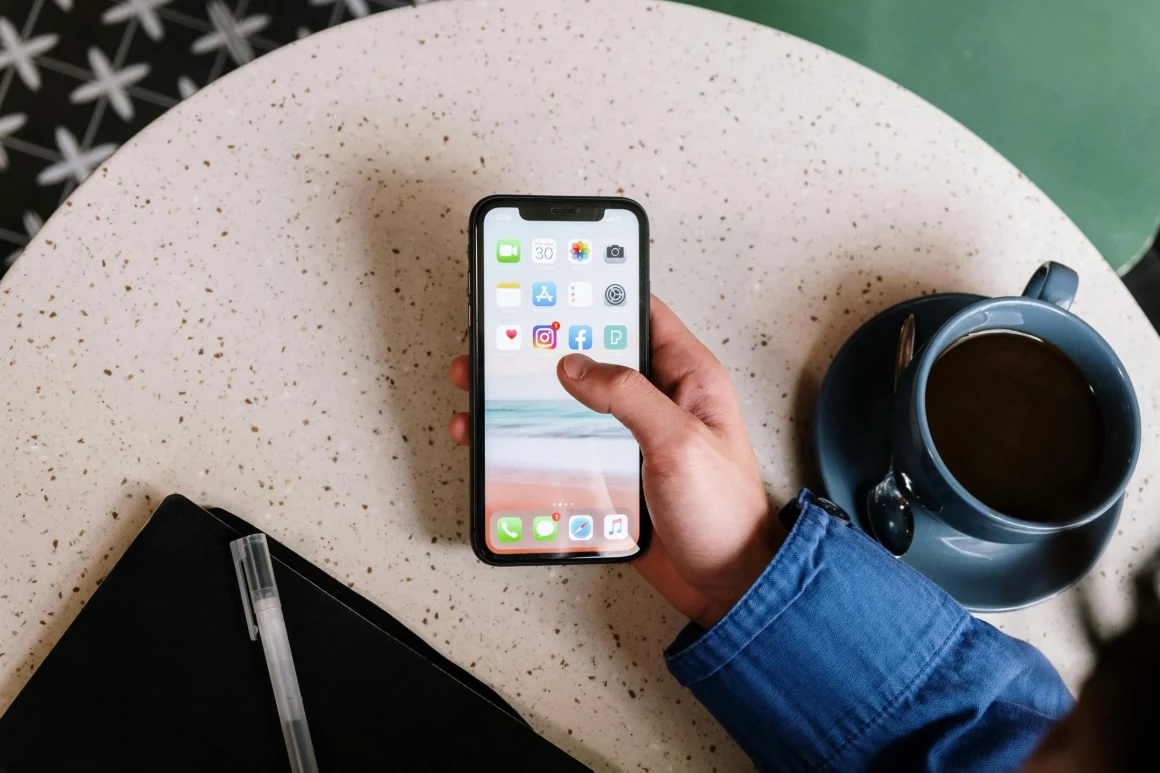Written by Lidia Vijga
Every CMO knows the top-line numbers. Online holiday revenue keeps breaking records. During the 2024 season U.S. e-commerce sales in the November-to-December window jumped 6.7% year over year. Mobile did most of the heavy lifting, grabbing more than half of all online purchases for the first time in history. The dollars are there, yet acquisition keeps getting harder.
Why? Attention is finite, and auction platforms are pay-to-play. The week before Thanksgiving, discount-hungry retailers flood the exchange. New entrants like Temu and Shein bid aggressively on competitors’ branded keywords, a move that spiked cost per click for everyone else.
Facebook and Instagram respond the same way: more buyers in the auction mean higher CPMs for you.
Most brands react by increasing frequency and throwing bigger discounts into broad prospecting. The typical Black Friday CPM doubles, sometimes triples, by November 15. The cost shock feels inevitable, but it is really self-inflicted. You are paying peak rates to show generic ads to audiences who may not even be gift shopping yet.
A Micro-Moment strategy does the opposite.
You watch for small spikes of purchase intent – quick product searches on a delayed subway, panicked gift card hunts on December 23 – and you serve the right message only in that window. Because you are bidding on fewer impressions and aligning them with urgent intent, your effective CAC drops, even while the market around you stays expensive.
What Exactly Is a Holiday Micro-Moment?

Google popularized the term years ago, but let’s make it concrete. A Micro-Moment is a brief flash when context, emotion, and trigger collide to create outsized buying intent. It can last seconds or minutes, never hours. If you intercept the shopper in that instant, conversion is easy and cheap. Miss it and the same user becomes just another expensive prospect.
Holiday Shopping Search Behavior
Look at December search behavior. People aren’t browsing, they’re hunting. Queries like “gift for dad under 50,” “arrive by December 24,” or “easy returns” spike hard. According to a Google study 65% of last-minute holiday shoppers start on a phone. If you remove friction and answer the question on that small screen, you win the cart.
Examples of Holiday Micro-Moments

Think of Lisa, a commuter whose train is delayed on Cyber Monday at 7:42 a.m. She pulls out her phone and searches “teacher gifts under $25 fast shipping.” She is not browsing. She wants a solution before the conductor says “doors closing.” Grab her with a carousel of in-stock bundles that arrive in two days and you win the sale at a bargain CPC.
Or think about Carlos on December 18 at 11:18 p.m. He suddenly remembers that his mother lands in two days. One quick query – “spa gift card email delivery” – and he will buy from the first trustworthy retailer he sees. Run a search ad with real-time email-delivery language and you capture him while your competitors sleep.
These flashes are the opposite of the broad, evergreen funnels we build the rest of the year. They are narrow, urgent, and profitable because nobody else is paying attention at that exact second.
Why Micro Moments Drastically Reduce CAC
Customer Acquisition Cost is simple: total spend divided by new customers. Micro moments attack both sides of that equation.

Spend falls first
You aim at narrow, high-intent keywords and tight audiences instead of the bloated “holiday gifts” universe. That focus shelters you from the worst auction spikes. One RightSideUp review of Varos data shows Meta CPMs jumping 33.5 % between October and November. Google CPMs rose 20% in the same period. You avoid that surge when you bid on “best white elephant gift under 25” while everyone else fights for “gifts for men.”
Conversions rise next
People inside a micro moment are ready to act. Someone typing “overnight shipping skincare set” is not top-of-funnel. Give her a clear answer and a one-click checkout and she converts in minutes.
Retention also improves. A customer who feels you read her mind on the first purchase is more likely to come back. That loyalty lifts lifetime value, bumps the LTV-to-CAC ratio, and makes your finance team breathe easier.
The 5 Holiday Micro Moments You Can’t Ignore
After digging through hundreds of Google Analytics paths and customer interviews, I group holiday intent into five recurring clusters. Think of them as chapters in the same story. Every product you sell can play a role in one or more of these chapters.

1. Gift Discovery: The “I Need a Gift Idea Now” Moment
Early in the season shoppers admit they have no clue what to buy. Google data backs this up: by December 1 just 44% of gift shopping is complete, meaning most people are still weighing options.
The emotional tone here is curiosity blended with mild anxiety. They want inspiration, not discounts. Landing pages filled with curated holiday ideas, gift guides, interactive quizzes, or “top pick” badges convert well because they simplify the search.
2. Deal Hunting: The “Five Tabs Open, Best Price Wins” Moment
Once a shopper decides on the category – or even the exact SKU – the mood switches to bargain hunting. This is where consumers open five tabs, compare colorways, and refresh coupon sites. They also flock to price-comparison searches.
Reuters reported that Black Friday 2024 online sales hit 10.8 billion dollars, up 10% year over year. That spike tells you how fierce deal sniping can be.
3. Last-Minute Panic: The “Does It Arrive Before Christmas?” Moment
Indecision rules deep into December. Google’s holiday research found that in the first week of that month fully 94% of U.S. shoppers still had gifts left to buy. When mid-December hits, shipping cut-offs become the loudest voice in their heads.
Think countdown timers, regional inventory call-outs, and mobile-first ad copy that spells out arrival dates down to the day. On December 20 a headline that reads “Order in the next four hours, arrives by December 24” destroys generic discount copy.
4. Self-Rewarding: The “Treat-Yo-Self” Moment

Right after the wrapping paper hits the trash, shoppers swing back to themselves. During the 2023 season Adobe tracked 222 billion dollars in online spending and noticed an unmistakable rise in “treat-yourself” orders starting December 26.
Prospects you just paid to acquire become inexpensive re-engagement wins when you email, “You handled everyone else. Now it’s your turn.”
5. Post-Holiday Exchange and Upgrade: The “New Year, New Me” Moment
Finally, January brings returns, exchanges, and gift-card redemptions. Google Trends shows searches like “e-gift card exchange” and “upgrade my X” spiking between December 27 and January 10.
These shoppers are warm leads that cost you nothing to retarget. They already know your brand from the gift they received; they just need a nudge toward a higher-margin product.
The 3 Data Pillars You Need Before Black Friday
You cannot intercept moments you cannot see. Here are the foundational data sets I insist every growth team put in place by November 1.

1. First-Party Behavioral Data
Track browsed products, category jumps, and time stamps for every session. Tie that to net margin at SKU level so you never push a deep discount on an item that already survives on a razor-thin spread.
2. Zero-Party Intent Signals
This is data shoppers volunteer: quiz answers, wish-list adds, SMS keyword replies, sentiment polls. According to Bain, companies that lean on these voluntary signals can expect two to three times higher ROI from personalization campaigns. You do not need enterprise tech to benefit. A simple Google Sheet and a Klaviyo field can work wonders.
3. Contextual Nano-Signals
Location, local weather, device type, and time of day all predict urgency. Even tiny contextual tweaks lift performance. For example, campaigns that adapt copy to local weather have been shown to raise click-through 10% to 20%. When a cold front hits Chicago, push insulated boots with language that says “warm in three days.” That feeling of immediacy outperforms any 15% coupon code.
Building a Micro Moment Engine in 5 Steps
Tools are optional. The discipline is not. I call this framework the Moment Engine.

Step 1: Moment Mapping
Sit down with your top twenty SKUs. For each product, write one sentence for every cluster: discovery, deal, panic, self-reward, exchange. The process forces clarity. If you can’t articulate why someone would buy your luxury throw blanket at 11 p.m. on December 23, you will never write copy that converts at that hour.
Step 2: Signal Instrumentation
Translate moments into trackable events. Maybe anyone who views comparison guides at night gets labeled “Late-Night Deal Hunter.” Anyone who hits the gift-wrap option before adding to cart becomes “Early Gifter.” Keep the taxonomy simple. Over-segmentation is the enemy of scale.
Step 3: Creative Atomization
You do not have the bandwidth to film fifty bespoke holiday ads. Instead break your existing assets into atoms: one product visual, one urgency overlay, one social proof snippet. Tools like Canva or a simple motion-graphics app can remix these atoms into dozens of fresh-looking variations in an afternoon.
Seasonal content becomes especially powerful here. Layer holiday-themed overlays, festive color palettes, and time-sensitive messaging onto your core product visuals to create urgency without starting from scratch.
Step 4: Automated Deployment
Link tags to triggers. When the system sees “Late-Night Deal Hunter,” it should immediately fire an SMS with a limited-time code and swap your site hero banner to a matching deal. If that reader is also within two-day shipping range, layer on the shipping countdown. Do not rely on human handoff, schedule it.
Step 5: Post-Moment Measurement
Judge each moment by two numbers: incremental conversion rate against a holdout and moment-level CAC. If “Late-Night Deal Hunter” stops beating your blended CAC, pause it, refresh creative, and relaunch. Your goal is a living loop: detect, act, measure, improve.
Channel-Specific Playbooks
Different channels shine at different stages of the moment journey. Here is how I allocate energy.

Paid Social Media: Snipe Instead of Spray
Load high-intent custom audiences weeks before CPMs spike. Page engagers, quiz finishers, and SMS subscribers all qualify. When the auction heats up you can limit spend to those lists and stay profitable.
I also schedule moment-specific windows. For example, I run “Last-Minute Panic” creative only after 8 p.m. local time beginning December 18, when overnight shipping anxiety peaks. The tighter your delivery window, the less you waste on casual scrollers.
Google and Shopping: Feed Hygiene Beats Fancy Tactics
Dynamic promos work wonders. Mark SKUs that qualify for local pick-up so search results show “Pick Up Today” for shoppers near your warehouse. Query sculpting is equally important. If your hero SKU carries a slim margin, negative-match words like “cheap” or “review” that attract unprofitable clickers.
Finally add real-time shipping cut-offs right inside headline two: “Arrives by December 24 if you order in 02:15.” This simple tweak lifts click-through without nudging CPC.
Email and SMS: The Two-Tier Cadence

Tier one triggers on behavior. Abandoned carts are obvious, but so are deep scrolls on your comparison guide or views of your sizing chart.
Tier two triggers on context. When geolocation shows snow in Denver, send a quick “Storm coming? Upgrade to insulated boots” message. SMS wins here because of speed. Open rates typically land between 90% and 98%. Your email sits in an inbox, but your text lights a lock screen.
On-Site Personalization: Small Details, Big Money
Real inventory counts beat fake scarcity every time. A dynamic badge that says “Only three left” based on your warehouse API increases add-to-cart rate in A/B tests.
Optimized product data feeds can improve conversion rates by up to 67%, as clean and accurate inventory information builds trust and encourages shoppers to complete their purchase.
Another overlooked tweak is a gift toggle on product pages. When a shopper check-marks “This is a gift,” swap your copy, surface gift-receipt options, and extend returns. That single toggle lifts checkout conversions 8% to 15% and builds trust in seconds.
Earned Media and PR: The Underpriced Attention Play

Yes, I run a tech publication. Bias noted. I still rely on data. Brands that land in last-minute gift guides often see organic conversion rates north of 9%. That traffic costs nothing. Pitch editors angles they can use fast: “Digital Gift Cards that Arrive Instantly” or “Stocking Stuffers under $30.” The journo gets a timely hook and you get bottom-funnel readers at a CAC of zero.
Quick Wins if You’re Already Late
Sometimes life, or corporate process, gets in the way of perfect planning. If Black Friday is six days out and you feel behind, focus on three rapid moves.
- Turn on a real-time shipping-cutoff banner across your site. It takes one line of code and removes buyer hesitation instantly.
- Launch a dedicated Google Shopping feed for digital gift cards. CPCs sit low and intent runs sky-high in late December.
- Fire a reactivation SMS to last year’s holiday buyers: remind them they bought, praise their taste, then offer version 2.0.
The entire sequence takes two hours to build and can recover 10 to 15% of your inactive customer base before peak week.
Turning Holiday Season Micro-Moments into Macro LTV

Lower CAC pays off twice if the customer comes back. Holiday buyers often turn into your best long-term fans because you joined their emotional calendar.
To lock that in, build a post-purchase education flow that teaches them how to get maximum value from what they bought.
Layer on birthday or half-birthday surprises.
Invite every holiday shopper into a private community space where loyalists share use cases, not coupons.
Most important, let your founder voice show up. A raw, plain-text note saying “Here’s why I built this product” beats polished brochure copy and builds brand love that performance ads cannot purchase.
Final Checklist and Next Moves
By now you have the core blueprint. Before you sign off, ask yourself these questions:
- Have you mapped moments for your hero SKUs?
- Are tracking tags live and firing inside both analytics and your ESP?
- Do you have at least three creative atoms per moment ready to rotate?
- Did you hard-code shipping cut-offs into every ad, email, and product page?
- Have you pitched your last-minute PR hooks?
- Can you see moment-level CAC in a real-time dashboard?
If any answer is no, block time on the calendar and fix it this week. Your Q4 P&L depends on it.
FAQs
What are Holiday Micro-Moments?
Holiday season micro moments are brief flashes when emotions and triggers create intense buying intent in shoppers. These micro moments last seconds during festive season Christmas shopping when customers feel urgent emotions.
How can Micro-Moment strategy reduce Customer Acquisition Cost (CAC)?
Micro moments strategy reduces business spend by targeting shoppers during peak intent spikes. Marketers focus on fewer impressions when holiday season customers show urgent emotions, making sales cheaper while competitors waste money on broad holiday campaigns.
What data pillars are essential for implementing a Micro-Moment strategy?
Three data pillars power micro moments: First-Party Behavioral Data, Zero-Party Intent Signals, and Contextual Nano-Signals. This helps business predict when customers surge on mobile and Google during holiday season, creating radar for peak shopping moments.
How can businesses build a Moment Engine?
Business can create a Moment Engine in five steps: Moment Mapping, Signal Instrumentation, Creative Atomization, Automated Deployment, and Post-Moment Measurement. This framework helps plan and identify micro moments when customers show peak shopping intent.
What are some channel-specific strategies for Micro-Moment marketing?
Channel strategies for micro moments include: targeting social media accounts precisely instead of spraying, optimizing Google Shopping feeds, using email cadence, personalizing website. Focus on mobile since more people shop on phones during holiday season.
How can businesses quickly implement Micro-Moment strategies if they’re late to start?
Quick wins for business: activate shipping cutoff banners on store website, launch Google Shopping feed for digital gifts, send SMS to last year’s holiday shopping customers. These capture December rush when people search for last-minute presents.









